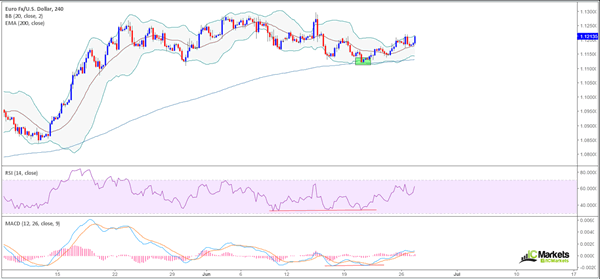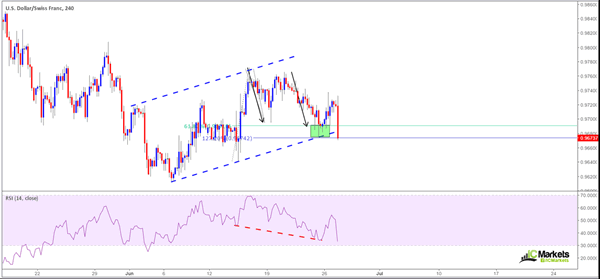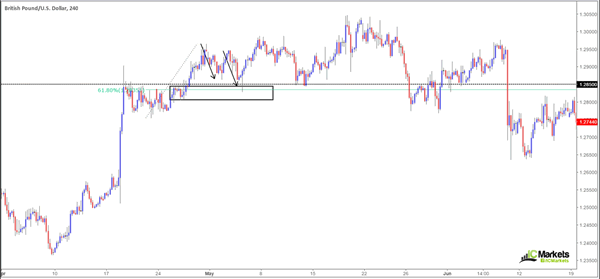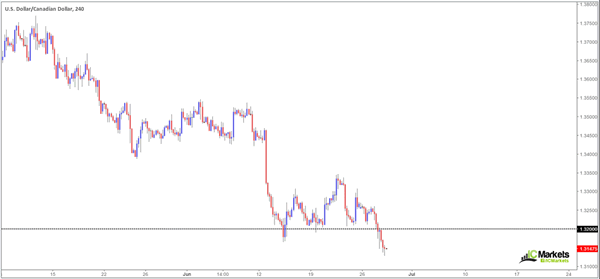To say confluence is powerful would, in our humble opinion, be a huge understatement! We agree that individual pattern recognition is worthy of attention, but without additional confluence it is not something we would entertain as a conceivable setup.
To become a successfully consistent trader you need an edge. This is something we’re sure we can all agree on. That edge can involve areas of confluence. Still, truly understanding what confluence is and how to use it effectively is sometimes difficult to grasp. This is especially true in the earlier stages of one’s journey, as confluent zones can form in a myriad of different shapes.
By the end of this article, you will have hopefully gained an understanding on how one can approach looking for confluence.
What is trading confluence?
Trading confluence can be defined in a simple sentence:
‘An area in the market where two or more structures come together to form a high-probability buy/sell zone.’
As highlighted above, understanding what confluence is and how to use it effectively can be challenging. For instance, some traders solely rely on indicators to develop a trading zone, whereas others prefer to focus on price action and there are also those that favour a combination of the two. No matter which path you choose, having a thorough understanding of each complementing component is vital.
The chart below (H4 EUR/USD) provides a visual example of how traders can use indicators to form confluence. The small green zone marks where a possible reversal can (and in this case, did) take place.
Complementing the zone, the following indicators came together:
- MACD divergence.
- RSI divergence.
- 200 EMA.
- Bollinger band support.

The next chart shows how one can exclusively use price action to establish a trading area. For those who follow our daily reports: IC Markets Market analysis you may recall that this was actually a trade our desk showed a lot of interest in.
Forming this trading zone, we had the following converging structures:
- H4 channel support.
- A H4 AB=CD 127.2% ext. level.
- A H4 61.8% Fibonacci support level.

And for traders who prefer to use a combination of price action and indicators, one could have simply added the RSI on the chart above as additional confirmation, which happened to show divergence at the time (see above).

It’s important to bear in mind that while trading areas of confluence does provide an edge, it doesn’t mean that every single trade will produce a profitable result. Expecting each trade to win will be extremely frustrating because, well quite frankly, it WILL NOT happen!
However, if you take into account the setups that show strong confluence will, on average, produce reasonable results, you can profit in this business. As long as you see that your account is growing over the long term, a losing trade is not a cause for concern.
How much confluence should a trader look for?
This is where we get into the nitty-gritty.
How will a trader know when he/she has enough confluence to trade confidently? Clearly, this will be trader dependent. Some traders may only require two things to come together to form a zone, while another trader may need at least five concepts to merge before taking a trade.
For the purpose of this segment, we’ll layout what we consider to be sufficient confluence. Personally, we designate each trade setup as either being: A1, A2 or A3.
An A1 setup is a first-rate trade. This is a setup which although may not be as regular as A2 and A3 setups, it tends to carry far more weight concerning the win/loss ratio. With that in mind, here are the following structures needed to fulfil an A1 formation:
- A credible area of structure. What we mean by this is the trading zone has to converge with either a supply or demand area, or a support or resistance barrier.
- A clear AB=CD formation. Ideally, the waves will have little interference. What we don’t want to see is a smooth A-B leg and a distorted C-D leg.
- Trade with the trend. Personally, we only look on the traded timeframe for this. Therefore, if we’re trading a H4 setup, we want to see the trend clearly painted on this timeframe.
- A psychological number. Most of us already know the importance of these values. For that reason, either a full round number (1.2300), or a mid-level number (1.2350) needs to be seen clearly around the area.
- Trendline convergence. Plotting the trendline is important here. Typically, we require at least two points, including the starting base, to be seen before drawing in a trendline.
- Either a 61.8% or 38.2% Fibonacci retracement point is required.
- A monthly or yearly opening level. Put simply, these are price points extended into the future from the opening candle of each year and month.
As you can see, there’s a considerable amount of structure required here. Once an area forms that shows all of these levels come together, we would, unless there is a high-impacting news event due to be released, expect the zone to at least bounce price. Below is an example of such a setup which turned out to be a monster of a trade:

An A2 setup on the other hand, is a watered-down version of an A1 formation. With this, one is not required to have the yearly/monthly opening level, or a trendline. The remaining check points listed above in the A1 section are still needed to fulfil an entry. In addition, both A1 and A2 setups ideally need to show space for price to move on the higher timeframes (you will see this in action when we get to A3). Here’s a basic A2 example:

This leaves the A3 setup. Just to be clear, we much prefer trading A1 and A2 patterns. But when there is nothing on the horizon, we will trade A3 setups, albeit using lower risk. Should a level such as a round number give way, with room seen for price to run, we would consider trading any retest of that level seen thereafter.
However, the retest must be accompanied by a bullish/bearish rotation candle (depending on which way you trade). A rotation candle is simply a candle that bounces from the level and forms a full, or very near-full-bodied candle. This, in our humble opinion, suggests buyer or seller intent. Of course, we would much prefer to see these levels bolstered by other structures such as a trendline, since every little helps!
Below is a perfect example of this in action as we recently took this trade. We must clarify though that our team did have additional reasons that bolstered this setup which we will explain shortly…

Ultimately, we were looking for a H4 close below the 1.32 handle to signify bearish resumption. Still, before we qualified a short, we needed a retest to take shape that is followed up with a H4 bearish (full-bodied) candle, which, as you can see, did indeed come to fruition. Nevertheless, this trade would not have been valid for us (especially using an A3 setup) if there was higher-timeframe support nearby. Looking to the daily timeframe on the chart below, you can see that there is room for the bears to stretch their legs, thus qualifying this trade:

What timeframe?
Which timeframe a trader selects will ultimately depend on his/her lifestyle. An individual who has a full-time job may only be able to swing trade, which entails one looking at the charts once (maybe twice) a day. Personally, to swing trade, we stick to the H4 timeframes and higher. Any lower, and we feel this is considered intraday.
If one is retired on the other hand, or works a part-time job, trading the market intraday is an option. Intraday simply means that a trade is executed and liquidated in the same day. Anything below the hourly timeframe is, for us, considered an intraday scale. This type of trading can involve sitting at the computer for several hours each day.
On the other side of the spectrum, you could also think about trading long term which involves looking at the charts a few times a week. This is slow and is not suited for everyone. Anything above the daily timeframe is what we deem to be long-term charts.
In closing…
Speaking personally, we feel trading areas of confluence is an incredibly strong edge. Without this, trading the markets successfully is difficult, not impossible mind you, but difficult. However, we must clarify that even with this edge it does not mean that you will succeed. Why? The reason simply comes down to psychology. Having the discipline to act, respect and follow your rules is often much harder than it sounds. In future articles, we hope to touch on the many psychological issues traders face.












